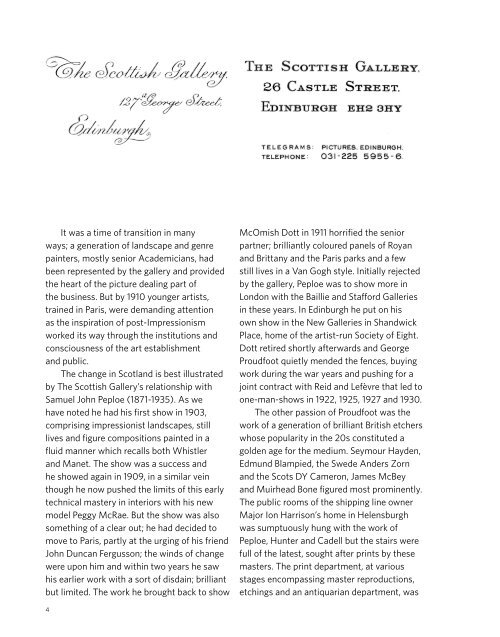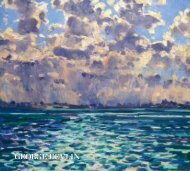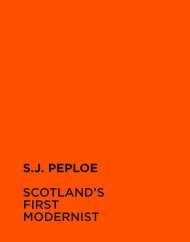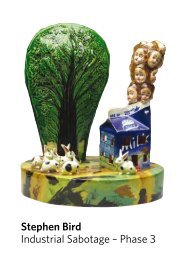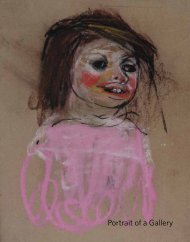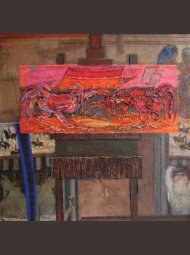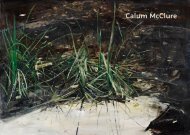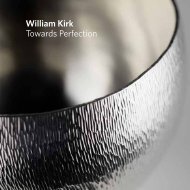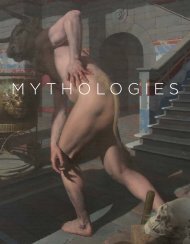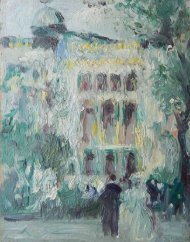Portrait of a Gallery - The Scottish Gallery
Portrait of a Gallery - The Scottish Gallery
Portrait of a Gallery - The Scottish Gallery
Create successful ePaper yourself
Turn your PDF publications into a flip-book with our unique Google optimized e-Paper software.
It was a time <strong>of</strong> transition in many<br />
ways; a generation <strong>of</strong> landscape and genre<br />
painters, mostly senior Academicians, had<br />
been represented by the gallery and provided<br />
the heart <strong>of</strong> the picture dealing part <strong>of</strong><br />
the business. But by 1910 younger artists,<br />
trained in Paris, were demanding attention<br />
as the inspiration <strong>of</strong> post-Impressionism<br />
worked its way through the institutions and<br />
consciousness <strong>of</strong> the art establishment<br />
and public.<br />
<strong>The</strong> change in Scotland is best illustrated<br />
by <strong>The</strong> <strong>Scottish</strong> <strong>Gallery</strong>’s relationship with<br />
Samuel John Peploe (1871-1935). As we<br />
have noted he had his first show in 1903,<br />
comprising impressionist landscapes, still<br />
lives and figure compositions painted in a<br />
fluid manner which recalls both Whistler<br />
and Manet. <strong>The</strong> show was a success and<br />
he showed again in 1909, in a similar vein<br />
though he now pushed the limits <strong>of</strong> this early<br />
technical mastery in interiors with his new<br />
model Peggy McRae. But the show was also<br />
something <strong>of</strong> a clear out; he had decided to<br />
move to Paris, partly at the urging <strong>of</strong> his friend<br />
John Duncan Fergusson; the winds <strong>of</strong> change<br />
were upon him and within two years he saw<br />
his earlier work with a sort <strong>of</strong> disdain; brilliant<br />
but limited. <strong>The</strong> work he brought back to show<br />
4<br />
McOmish Dott in 1911 horrified the senior<br />
partner; brilliantly coloured panels <strong>of</strong> Royan<br />
and Brittany and the Paris parks and a few<br />
still lives in a Van Gogh style. Initially rejected<br />
by the gallery, Peploe was to show more in<br />
London with the Baillie and Stafford Galleries<br />
in these years. In Edinburgh he put on his<br />
own show in the New Galleries in Shandwick<br />
Place, home <strong>of</strong> the artist-run Society <strong>of</strong> Eight.<br />
Dott retired shortly afterwards and George<br />
Proudfoot quietly mended the fences, buying<br />
work during the war years and pushing for a<br />
joint contract with Reid and Lefèvre that led to<br />
one-man-shows in 1922, 1925, 1927 and 1930.<br />
<strong>The</strong> other passion <strong>of</strong> Proudfoot was the<br />
work <strong>of</strong> a generation <strong>of</strong> brilliant British etchers<br />
whose popularity in the 20s constituted a<br />
golden age for the medium. Seymour Hayden,<br />
Edmund Blampied, the Swede Anders Zorn<br />
and the Scots DY Cameron, James McBey<br />
and Muirhead Bone figured most prominently.<br />
<strong>The</strong> public rooms <strong>of</strong> the shipping line owner<br />
Major Ion Harrison’s home in Helensburgh<br />
was sumptuously hung with the work <strong>of</strong><br />
Peploe, Hunter and Cadell but the stairs were<br />
full <strong>of</strong> the latest, sought after prints by these<br />
masters. <strong>The</strong> print department, at various<br />
stages encompassing master reproductions,<br />
etchings and an antiquarian department, was


